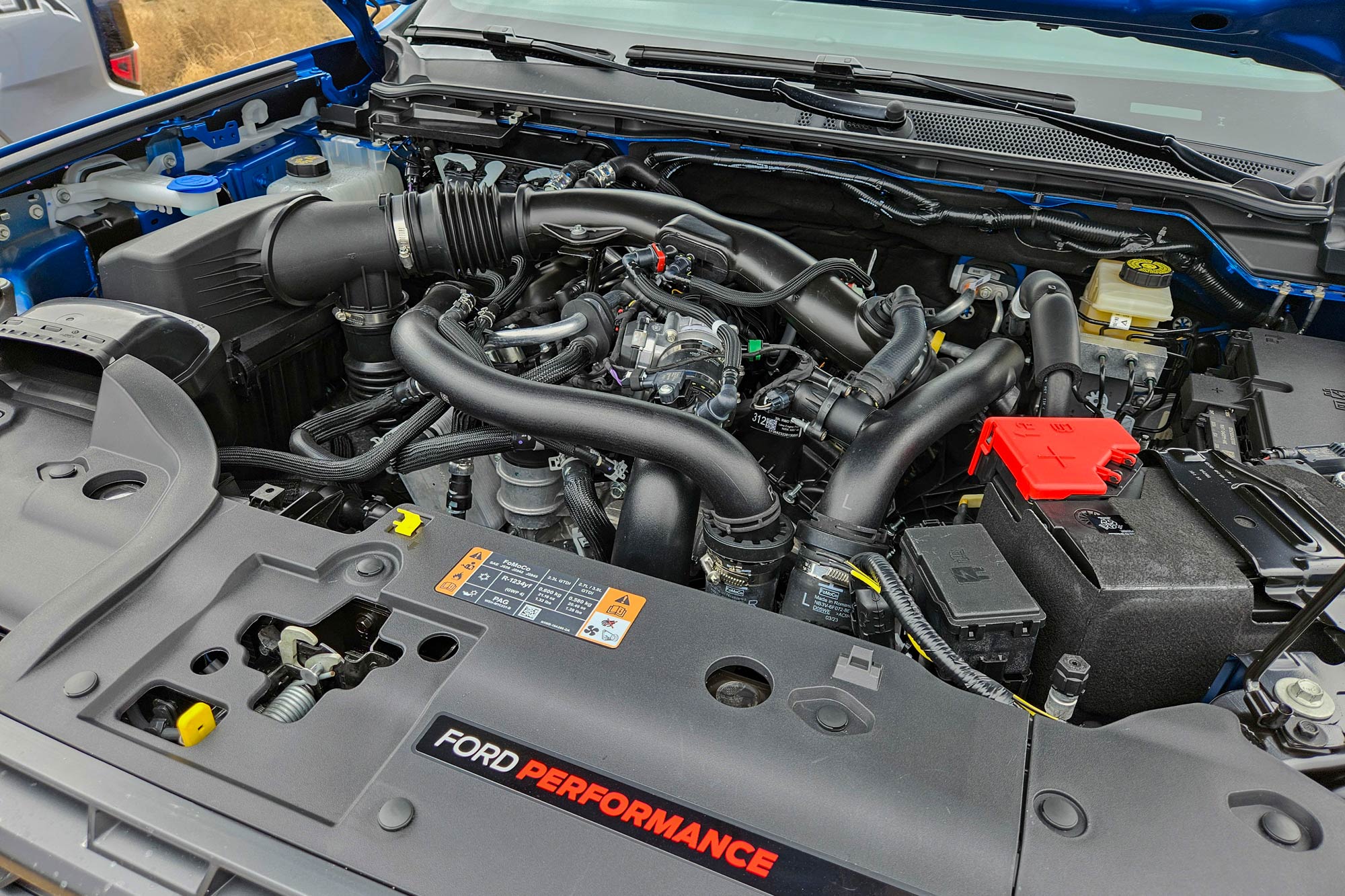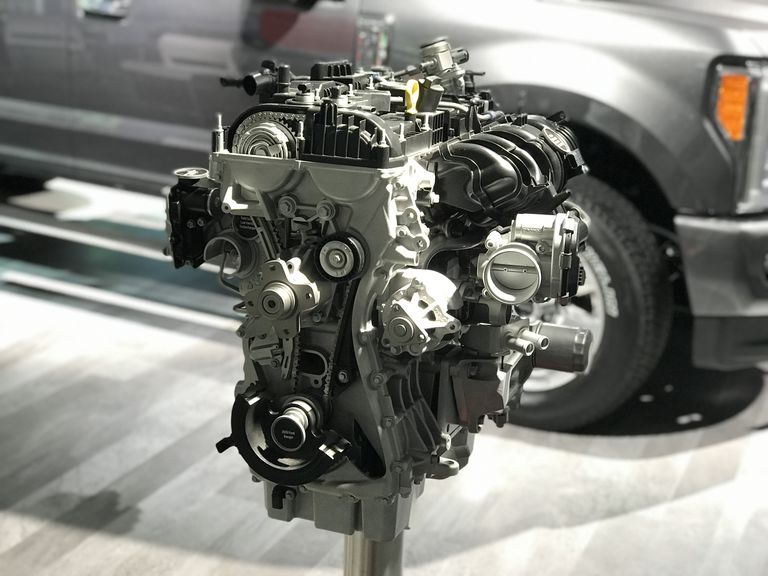Explore the Key Features of the 2.2 Ford Ranger Engine and Its Fuel Efficiency
Explore the Key Features of the 2.2 Ford Ranger Engine and Its Fuel Efficiency
Blog Article
Understanding the Essentials of Vehicle Engines: Features, features, and types

Review of Auto Engines
A car engine offers as the heart of a vehicle, transforming gas into power to push it onward. This elaborate system makes up numerous elements that work in unison to make certain ideal performance and efficiency. The basic procedure of an automobile engine entails the inner combustion process, where fuel and air are mixed, ignited, and removed to create power.
The engine's layout can dramatically influence its performance, fuel efficiency, and emissions. Key elements consist of the cyndrical tube block, pistons, crankshaft, and camshaft, each playing an important function in the engine's overall feature. The cyndrical tube block houses the cyndrical tubes where combustion occurs, while the pistons convert the explosive power from combustion into direct motion. This motion is then changed right into rotational power by the crankshaft, making it possible for the lorry's wheels to turn.
Along with these elements, engines commonly make use of numerous systems such as gas injection, ignition, and cooling down systems to enhance efficiency and longevity. Recognizing the standard technicians of automobile engines is essential for detecting problems and doing upkeep, eventually adding to the lorry's integrity and performance in time.

Types of Cars And Truck Engines
Auto engines can be categorized into numerous kinds based on their design, fuel kind, and operational principles. 2.2 ford ranger engine. The most typical groups consist of interior combustion engines (ICE), electric engines, and hybrid engines
Interior burning engines, which can be more separated right into gasoline and diesel engines, operate by firing up a fuel-air combination to create power. Gas engines are typically lighter and smoother, while diesel engines are a lot more fuel-efficient and deal greater torque.
Electric engines use electric energy stored in batteries to power an electric motor, supplying immediate torque and zero discharges during operation. As innovation advancements, electrical cars (EVs) are increasingly coming to be prominent for their environmental advantages and lower running prices.
Crossbreed engines integrate aspects of both interior combustion and electrical engines, permitting for flexible power sources and improved gas performance. They can operate in various settings, making use of either the fuel engine, the electrical motor, or both all at once.
Each kind of engine has unique benefits and drawbacks, influencing their application in various car types and market sectors, from portable cars to durable trucks. Comprehending these kinds is crucial for making informed choices concerning automobile selection and efficiency assumptions.
Engine Functions Described
Understanding engine features is vital for realizing how vehicles run effectively. At the core of any kind of interior burning engine exists the basic procedure of transforming gas into mechanical power. This process begins with the intake stroke, where air and fuel are attracted into the combustion chamber. Following this, the compression stroke presses the air-fuel mix, enhancing top article its temperature and stress.
The ignition happens following, sparking the mix and developing a rapid development of gases. This pressure drives the piston down during the power stroke, which eventually translates into the rotational activity of the crankshaft. The exhaust stroke after that removes the spent gases from the chamber, making way for a new cycle to start.
In addition to these primary functions, engines additionally incorporate systems that take care of air conditioning and lubrication, making certain ideal operational temperature levels and reducing rubbing between moving components. This intricate interplay of functions makes it possible for the engine to generate the power required for automobile propulsion while keeping effectiveness and reliability. Comprehending these features provides useful insight into the intricacies of automotive design and boosts the capability to identify and address engine-related issues efficiently.
Key Engine Functions
Engine design incorporates numerous key features that considerably affect performance, resilience, and efficiency. One of one of the most critical aspects is the engine configuration, that includes inline, V-type, and level styles. Each arrangement affects the engine's equilibrium, power, and size result, thereby see here now impacting total car dynamics.
An additional necessary attribute is the engine displacement, referring to the total volume of all cylinders. Larger variations normally yield more power however may jeopardize fuel effectiveness. Engine materials likewise play a crucial function; lightweight and high-strength products, such as light weight aluminum and magnesium alloys, improve performance without adding excessive weight.
The kind of fuel shot system employed-- such as direct or multi-port injection-- affects combustion effectiveness and discharges. Supercharging and turbocharging are features that boost engine efficiency forcibly extra air into the burning chamber, enhancing power outcome without considerably enhancing engine size.
Finally, the presence of innovative engine monitoring systems optimizes fuel-air blend and ignition timing, adding to smoother procedure and better gas economic climate. Collectively, these functions define an engine's abilities, setting the structure for its efficiency and durability in a competitive auto landscape.
Upkeep Tips for Engines
Proper engine maintenance is essential for making certain ideal efficiency and durability, as ignoring routine care can result in substantial concerns down the line. To preserve your engine efficiently, start with routine oil modifications, usually every 3,000 to 7,500 miles, depending upon the kind of oil made use of. Fresh oil lubes engine components, reducing friction and wear.
Additionally, monitoring coolant degrees is vital to avoid overheating. Ensure that the coolant is covered up and is in great condition to keep efficient temperature law. Regularly inspect and change air and gas filters, as clogged filters can hinder air movement and fuel delivery, compromising engine effectiveness.
Additionally, focus on ignition system and ignition systems. Used or malfunctioning trigger plugs can lead to misfiring and reduced efficiency. Inspecting the battery terminals and connections for deterioration is likewise important, as a weak battery can influence engine beginning.

Final Thought
In summary, an extensive understanding of car engines encompasses different kinds, functions, and key features that substantially influence car performance. Interior combustion engines, in addition to hybrid and electrical alternatives, show varied mechanisms for power conversion. 2.2 ford ranger engine. Recognizing the essential functions, such as intake and exhaust cycles, together with vital engine features like configuration and fuel injection systems, outfits vehicle proprietors with the expertise necessary for reliable maintenance and procedure, ultimately improving lorry longevity and effectiveness
An auto engine serves as the heart of a lorry, transforming fuel right into mechanical power to propel it forward. The essential operation of a vehicle engine includes the inner combustion process, wherein gas and air are mixed, sparked, and gotten rid of to develop power.
Routinely evaluate and change air and fuel filters, as clogged up filters can impede air movement and fuel distribution, jeopardizing engine efficiency. - 2.2 ford ranger engine
In summary, a detailed understanding of car engines includes different types, functions, and vital features that substantially affect vehicle efficiency. Acknowledging find more information the necessary functions, such as intake and exhaust cycles, alongside essential engine attributes like arrangement and fuel injection systems, gears up automobile proprietors with the expertise needed for effective upkeep and procedure, eventually enhancing vehicle durability and efficiency.
Report this page